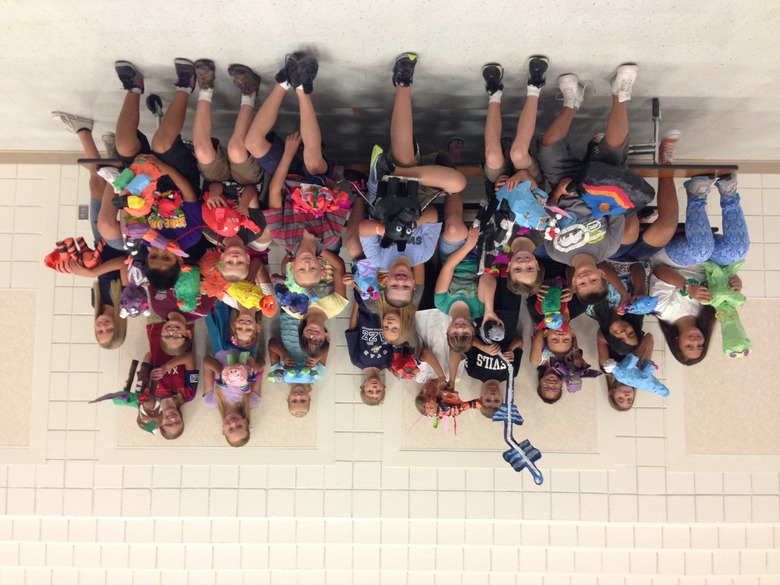- Author:
- Suzanne
- Subject:
- Visual Art, English Language Arts, Elementary English Language Arts, Science, Biology
- Material Type:
- Assessment, Lesson Plan
- Level:
- Upper Elementary
- Grade:
- 4
- Tags:
- License:
- Creative Commons Attribution Non-Commercial
- Language:
- English
- Media Formats:
- Text/HTML
Education Standards
Create an Animal Rubric
Utah Environments
Design an Animal

Overview
This lesson plan is a cumulative activity for SEED 4.1.1Construct an explanation from evidence that plants and animals have internal and external structures that function to support survival, growth, behavior, and reproduction.
Students create and write about a unique creature with a focus on structures leading to its survival.
Cover Image: Personal photo taken by lesson plan creator
Summary
Students will create a unique animal based on real-life internal and external structures that support survival growth, behavior, and reproduction. Students will explain how specific structures lead to survival for the new animal.
Time Frame: One to three weeks based on the type of art selected
Format: Face to face
Cover image: Personal photo of lesson plan author
Background for Teachers
To teach this lesson, you will need:
- an understanding of internal and external structures that function to support survival, growth, behavior, and reproduction.
- an understanding of the three major environments in Utah and the challenges to survival animals face in each.
The following resources can help you teach this topic:
- Next Generation Science Standards https://www.nextgenscience.org/pe/4-ls1-1-molecules-organisms-structures-and-processes
- SEED Storylines written by Davis School District https://drive.google.com/drive/folders/100tPhOw2OdDC5UxGCY7tfUgSaFRwACKW?usp=sharing
Step 1 - Goals and Outcomes
Standard 4.1.1
Learning Intentions:
- Students will be able to explain how internal and external structures support an organism's survival in its environment.
Success Criteria:
- Students will create a new animal and explain how its unique structures allow it to survive in one of Utah's environments.
Step 2 - Planning Instruction
Student Background Knowledge
Prior to this lesson, students will need to have an understanding of:
- different animals of Utah
- internal and external structures supporting the survival of animals
- Utah's environments
Strategies for Diverse Learners
Teachers can allow students:
- access to audio recordings of readings
- to choose from a list of structures and their benefits
- to access a list of selected Utah animals for research
- alternate ways to present findings beyond writing (audio recordings, verbal presentation to teacher, etc.)
Step 3 - Instruction
Cumulating activity for Science Standard 4.1.1
Day 1
Teacher introduces the project and objectives.
Students complete teacher-guided Nearpod Animal Structures as a refresher of internal and external structures in animals.
Day 2
Teacher introduces goals for the day and resources to be used.
Students select individual structures to include in their invented animal. Using either Gale In Context Elementary or World Book Online, students find information about a real animal with the same structure. Students complete Create an Animal worksheet including correct citations for research information.
Scaffolding can include directing students to Loveland Living Aquarium Discover Utah Animals page for specific animals and their structures.
Day 3
Teacher introduces goals for the day and perimeters for project. Teacher monitors student work and time limits.
Students use information from Create an Animal worksheet and individual research to sketch a new animal. Students identify what materials are needed to create an artistic representation of animal. (Alternatively, teachers can provide a list of available supplies or a list of acceptable presentation methods ie paper mache, found objects, drawing, digital art, etc.)
Day 4
Teacher reviews writing rubric and goals for the writing piece with students.
Students write 3 paragraphs about the invented animal. One paragraph to describe animal and one each for the two structures.
Time needed depends on student abilities and experience with wrting. Appropriate scaffolding to be provided by the teacher based on student needs.
Future Days
Teacher will provide sufficient time and supervision for students to complete artistic representation of animal.
Extension
Students can present final animals and justification for the choice of structures to class.
Links:
- Gale In Context https://go.gale.com/ps/start.do?p=ITKE&u=onlinelibrary
- World Book Online https://www.worldbookonline.com/home/
- Nearpod Animal Structures created by Nebo School District https://np1.nearpod.com/sharePresentation.php?code=25136c4902e741252cffe0dc85a4293a-1
- Loveland Living Aquarium Discover Utah Animals https://thelivingplanet.com/animal-habitats/discover-utah/
Step 4 - Assessments
Teacher uses conversations with students as a formative assessment to check for connections between structures and survival advantages.
Rubic used to assess completion of project and objectives met.